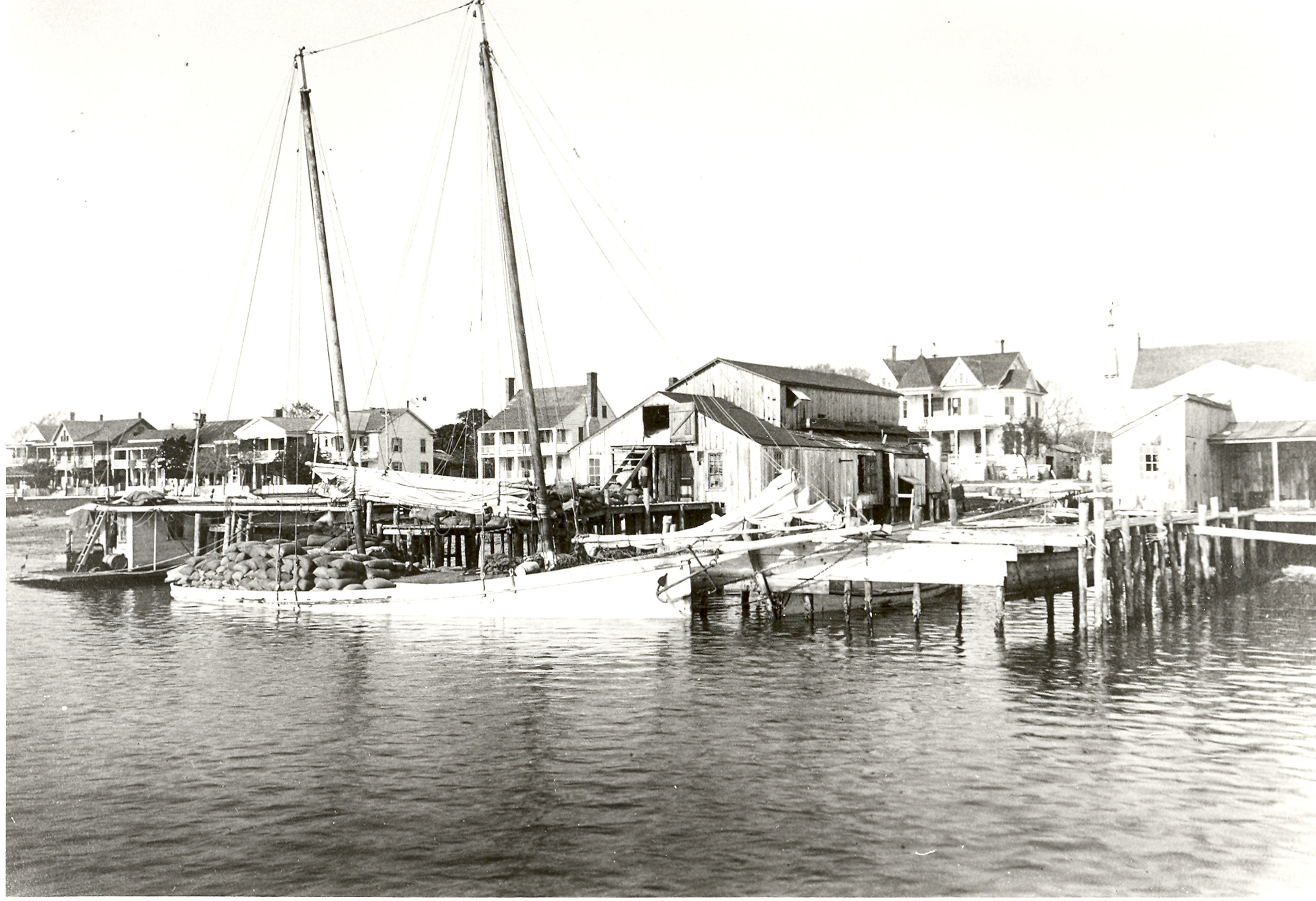The Workboat Alphonso
Freight, Menhaden, Museum


Listen
Pam Morris talking about her great grandfather’s freight boat Alphonso, and how she came to know the vessel when it was beached in Beaufort and turned into a “whaling” museum of sorts.
Read
The Alphonso had a variety of uses and seems to have led an interesting life! The 55-foot schooner-rigged sharpie was built in Williston in 1911 by Zephaniah “Zeff” Willis for Theodoshia (“Dosh”) Davis and his two sons Robert Lee and Blanchard Davis. The builder received $300 for the project, not including sails and paint. The full cost was estimated to be $350. Wayne Willis noted:
The logs the Alphonso was built from were cut with cross cut saws in the Oyster Creek Swamp, skidded with a team of oxen by Dosh and his sons to Lon Willis’ sawmill at Howland Point… The logs were sawed into lumber by Warren Piner and then hauled on a sharpie to Canfield’s planning mill in Morehead City. There it was dressed and hauled by a sharpie back to Williston where Zeff built the boat.
Although powered by sail in the first two years, the Alphonso was fitted in 1913 with a 20 HP gasoline engine. In 1916 the Alphonso was repowered with a 35 HP engine.
Captain Dosh Davis had the Alphonso built to run freight to New Bern. “The Alphonso was one of the freight boats of that era that hauled fertilizer from the Meadows plant [in New Bern] to Carteret County,” Wayne Willis stated. He described the route:
The route that the Alphonso ran at that time took her from Davis north through Core Sound to Wainwright Slough and then up the Neuse River. She would bring back freight through the Harlowe Canal coming out in Beaufort where she would stop to discharge freight items. Then…proceed on to the next series of stops until she returned to her homeport of Davis.
Captain Harry Frisbee of Davis used the Alphonso to dredge oysters in the early 1930s, according to Willis. Captain Frisbee also happened to operate the first Post Office in Davis. A local historian reported that Frisbee, a Connecticut native, subscribed to a New York newspaper, and “on mail days all the community would gather at the post office, not only to get their mail but to hear Captain Frisbee read his paper.”
In 1938 the Alphonso was converted to a menhaden vessel by Wallace Fisheries of Morehead City. Crews used a purse seine net to catch large numbers of the oily, bony menhaden, and the Alphonso was used to transport the load to a shoreside factory where the fish was cooked, pressed, and dried, producing fishmeal and oil. Carteret County had numerous menhaden plants, and maintained a viable menhaden fishery until the last plant closed in 2005.
Ottis Purifoy of Ottis’ Fish Market bought the Alphonso in 1945 and used her as a fishing boat.
Grayden Paul, keen to promote the maritime history of Beaufort in honor of the town’s 251st anniversary, obtained the Alphonso in 1960 and converted her into a maritime museum. The vessel was beached along the waterfront across the street from the Post Office, and “Museum of the Sea” was painted on the hull. Tours were free and self-guided, and for eighteen years, visitors were treated to a variety of maritime artifacts, seashells, and other specimens.
“The Alphonso was ultimately a victim of the Beaufort Historical Society” wrote David Cecelski, “which, in a curious fit of pique, had her burned by the local fire department to be rid of the old girl.” Beaufort Historian Mary Warshaw added, “After 18 seasons, the 77-year-old vessel, home of numerous artifacts, was considered unsafe for public use and was burned by Beaufort firemen.”
Wayne Willis noted that the Alphonso thus “got her last job as the first home to the Maritime Museum,” true in the sense that the “Museum of the Sea” was Beaufort’s first maritime-related attraction. But today’s North Carolina Maritime Museum got its start as a quirky collection on Pivers Island in the early 1900s and then became the Hampton Marine Museum in Morehead City in 1951 before relocating to Beaufort in 1970. The North Carolina Maritime Museum was thus not born in the belly of the Alphonso; it did, however, inherit the old boat’s collection of maritime curiosities in 1978.



